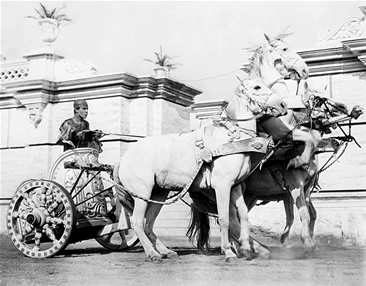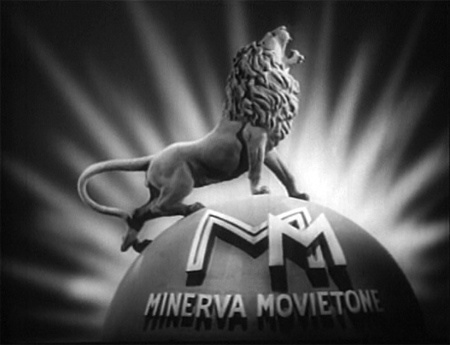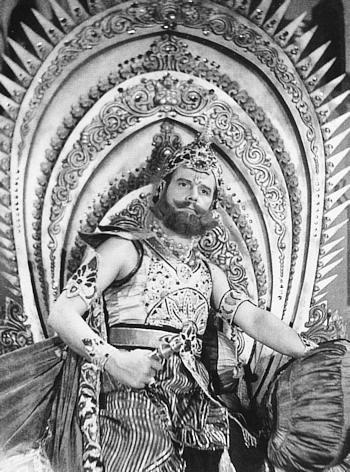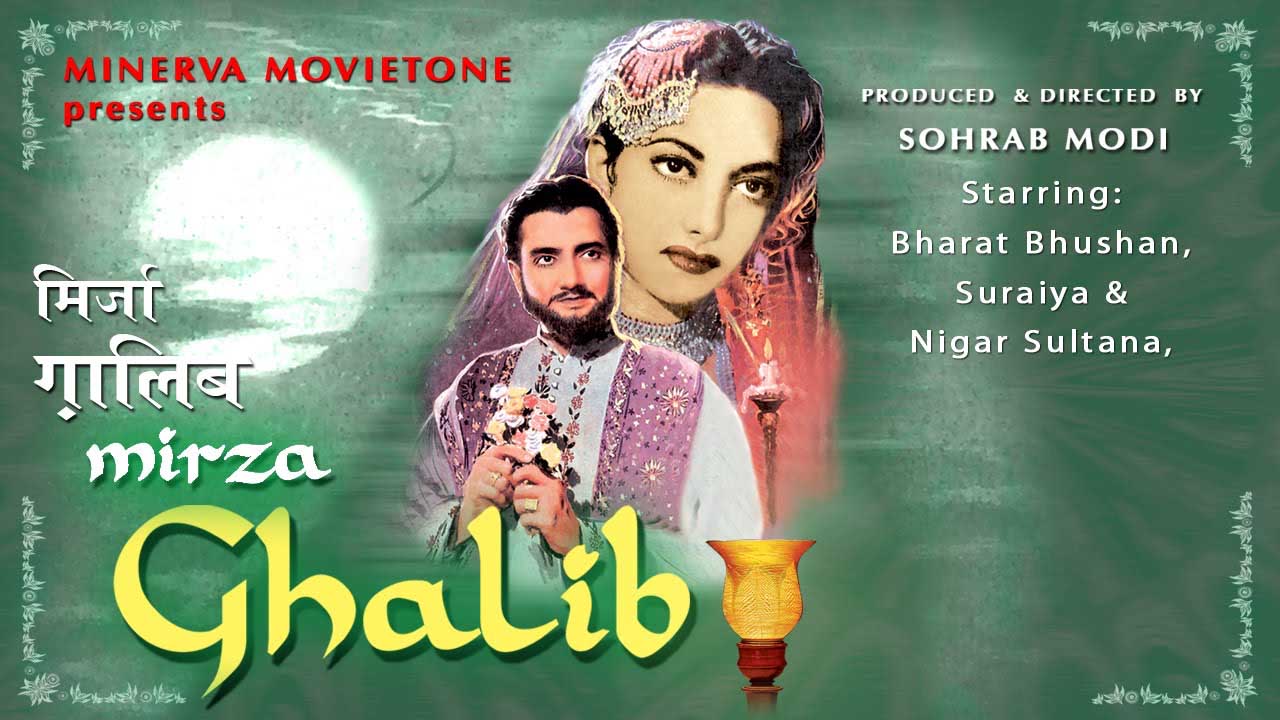| HOME | PRESENTACIÓN | ¿FILMAR LA HISTORIA? | DIRECCIÓN-REDACCIÓN | NÚMEROS PUBLICADOS | NORMAS DE PUBLICACIÓN | CONTACTOS | ENLACES |
 |
THE GOLDEN AGE OF HINDUSTANI CINEMA:
La Edad de Oro del cine indostano: Grad. Jordi Macarro Fernández
Recibido el 19 de Enero de 2015
Abstract.The years before the outbreak of World War II are the grounds of a national economic change that would affect not only the film industry, but also the Indian mentality: the patriotic fervour became an anti-imperialist ambience. Many directors, and among them Sohrab Modi, made films that clearly defended the will of a free India, reappraising the history of the vanquished as an expression tool of a political ideology opposed to the historical construction of an India based on colonialism.. Resumen.Los años previos al estallido de la Segunda Guerra Mundial son el germen de un cambio económico nacional que afectaría no solo a la industria del cine sino también a mentalidad india; el fervor patriótico se transformó en una atmósfera anti-imperialista. Muchos directores, entre los que se encuentra Sohrab Modi realizaron películas en las que se reivindicaba claramente la voluntad de una India libre, revalorizando la historia de los vencidos como herramienta de expresión de una ideología política contraria a la construcción histórica de la India basada en el colonialismo.
The decades of the 30s to the 60 delimit the "Golden Age" of Hindustani cinema (1). The presence of big Muslim talents (Thoraval 1998: 89), belonging to all professions linked to the world of cinema, is more than remarkable. In those years of imposed "faith in the promises of social and constitutional institutions" that revolves around the idea of a "New India", cinema mediates between the prevailing "idealism (and violence) and neo-traditionalism” in the Hindi commercial cinema, away from any law-breaking intention of it (Hindi commercial cinema) as its aim was to support a change in the core of the thematic and aesthetic conventions (2). New filmmakers (Muslims, Parsis, Hindus) deal in his films (Hindi, Bengali, etc ...) with a theme focussed on the great moments of Muslim presence in India (3). In the decade of the 30s to the 40s, historical films based on stories of real people or legendary heroes (4) became popular. However, this popular genre brought two readings: an underlying patriotic message motivating national self-recognition and the independence sentiment (Vasudevan 2012: 37). Social realism is settled on screens (particularly Hindi) during the 40’s and the 50’s through mythological, melodrama, adventure and also patriotic films, continuing the wave initiated in the previous decade. These genres, with some exceptions, become the norm and although historical films do not constitute a genre that can be recognized as popular today, in the decades of the 40’s and the 50’s a small number of patriotic films were carried out backed by the production of a certain number of songs (Macarro Fernández 2009) in which the Indian nationalist message was clearly stated (5). From the 40’s onwards, in the northwest of the subcontinent emerges what some researchers call the Hindustani stream of Indian cinema, prompted by a linguistic-cultural synthesis between the Hindi and Urdu languages. This Hindustani films show a clear preference for the musical and romantic historical genre whose roots are in the Parsee theater (Macarro Fernández 2014) of the nineteenth century and that is revealed in turn as the heir of those films under the nationalist movement Swadeshi (previous to the independence). This movement brought to the big screen landmarks of Indian history (6) with the clear objective of reaffirming a hundred percent Indian personality and identity before the British Empire (invader and colonizer), by retrieving and magnifying the "pan-Indian or regional national glories". This work of historical-political self-determination conveyed through the film art could be developed thanks to the close collaboration of Hindus, Parsis and Muslims whose interests were based on a common will previous to the territorial division of the subcontinent in 1947. A clear symbolic demonstration of cinema whose openness of mind and spirit has left us samples of the beauty and grandeur of both cultures, through the works of many of the filmmakers who far from separating and falling into a religious self-marginalization did bet to reflect with complete impartiality not only their culture but also that of its neighbors (Thoraval 1998: 87-89). The need to create a national consciousness is born on the time of independence (7) and it is in that moment that the Hindu-Muslim history is positioned before any other theme, as, for example, choosing the Mogul grandeur (8) allows and even arguably requires producers to make blockbusters where all the sumptuosity will be highlighted through great chorus that merge with the music: a "national and cultural symbiosis" that as Yves Thoral indicates in Cinemas de l'Inde, is a "sign of deep Indianness" of Indian Muslims. The choice of specific moments in history, focusing on the subsequent to any kind of foreign invasion national glorious past contains a message that underlies the constant reading of a "domination that is never definitive" (9). The songs and the dance used by the author as essential support and foundation of what he wants to say and show (or prove, if we take into account a second reading with a clear independent message), are the elements that open the door to the oneiric world, that through the legends, allows a free recreation of the stories of the history and that that can be linked to the present through a mythical world (10). This clearly shows one of the characteristics of the Hindustani cinema that, favoured by a strongly marked Indian-Muslim feeling, a direct consequence of the fame reached since its development in the 30s, recreates on the big screen historical subjects that are far from wanting a "scientific reconstruction of the past", in opposition to the Western will of the film industry.
Urdu film by Sohrab Modi Born in the border state of Gujarat, in western India (border shared with Pakistan), S. Modi came into contact with the film world in 1914 by the hand of his older brother, who was the owner of a company dedicated to the itinerant exhibition of films, the Kismat Cinema, which allowed him to learn more about the India of the first years of the century. In 1924, he founded in the city of Gwalior (in the state of Madhya Pradesh) the Arya Subhodh Theatrical Company (Gangar 2008: 6) specialized in representing plays by William Shakespeare in Urdu. Due to the success of the company, Modi made the leap to the big screen and thanks to the initiative of his brother, created the Stage Film Company, to adapt Hamlet to the big screen, the most successful work of the theater group Khoon Ka Khoon (S. Modi, 1935). The "indianization" of this Shakespeare’s hero, popularized by the Parsee theatre and starred and directed by Modi himself, marks the beginning of a prolific film career, full of works among which historical films stand out. In those films he dealt with contemporary social issues with a clear critical background (socially relevant films that reached a more than considerable success), and they exalted him as one of the most representative figures (actors-directors) in Urdu cinema (11). All this was possible thanks to the foundation in 1936 of its own producer company, the Minerva Movietone (12): a turning point in the career of the actor, that would catapult him to be considered one of the "most passionate and inventive representatives of the golden age of Hindustani cinema" (Thoraval 1998: 114-115). Throughout his 70 year career (13), he produced 62 films and directed 45 of them, and acted and wrote the script of many of them, embodying in his own person the figure of the complete author. This allowed him to control the estimate of the projects providing his "quasi-historical-romanized and (melo) dramatized films" (Thoraval 1998: 114) with budgets that enabled the development of a great show in the big screen, with sets, costumes and music meticulously taken care of, in addition to the total and absolute freedom to introduce Hindu-Muslim characters in various scenes.
Throughout the 30s, he made 8 films: Khonn Ka Khoon / Hamlet (1935), Said-e-Havas / King John (1936), Atma Tarang (1937), Khan Bahadur (1937), Talaq / Divorce (1938), Jailor (1938), Meetha Jahar / Sweet Poison (1938), and Pukar / The Call (1939), his second major blockbuster, after the theatrical adaptation of Hamlet,mentioned above. Shot in Urdu and produced by Minerva Movietone, this bill ambitious film, starred by Modi, tells a story of unrequited loves, fights, revenge and forgiveness, an ensemble of passions framed by the opulent everyday life in palace in a story that celebrates tolerance and whose scenarios are a clear example of the loose budget the director had (Thoraval 1998: 114). The decade of the 40s was also prolific for the director; over those years, he directed a total of 9 films: Bharosa / Trust (1940), Sikandar / Alexander (1941), Phir Milenge / We will meet again (1942), Prithvi Vallabh (1943), Parakh / Judgement (1944), Ek Din Ka Sultan / King For a Day (1945), Manjhdhar / The flow of the River (1947), Dawlat / Wealth (1949), Narasinha Awtar / The Incarnation of Narasinha (1949). His position within the Hindustani industry as renowned director is secured thanks to a performance that is appreciated for being more mature and determined. Among them all, its magnificent epic Sikandar / Sikander stands out as it is one of his most ambitious projects. It was realized during the Second World War in the context of a "national liberation movement" (Macarro Fernández 2015: 199), in which he evokes "the victorious resistance of the Indian people against the armed invasion of Alexander "III of Macedonia (Parrain 1969: 94). Two years later and also having a big budget, he adapts a Hindu literary work set in the tenth century, an adaptation of the romance of KM Munshi (14), Prithvi Vallabh (1943). But it will be during the 50s when his work focuses more on dealing with the biopic, and the historical-nationalist genre that managed to endure after the turbulent independence of India and a more than highly controversial separation of the Pakistan in 1947. In 1950 he makes Sheesh Mahal / The Palace of Glass, which illustrates the difficulties of a noble "Rajput" family that tries to adapt to the laboral world in a society that is between the aristocratic feudal decadence and the implementation of capitalism. The nationalist demand is resumed again in 1953 through the historical context and a real fact which takes us back to the nineteenth century and the fighting against the British East India Company, this time involving a woman (Damsteegt 2003: 94-111), in Jhansi Ki Rani [Hindi] / The Queen of Jhansi / The Sword and the Flame [English] (1953) (Thoraval 1998: 116), one of the first Indian films in technicolor that allow the director to record magnificent battle scenes in the style of the American super-productions.
In 1954, the biographical genre finds its highest expression with reenactment on the big screen of the life of the most important poet in Urdu, Mirza Galib (1797-1869), who had worked for the last of the Mughal emperors assigned by the British, Bahadur Shah Zafar. The film, Mirza Ghalib (1954) (Garga 1996: 175; Hines 2007), is a clear cinematic tribute to the Indo-Muslim culture, and in its production spared no expenses as there are luxurious settings that are the stage of a romantic story accompanied by love songs (Désoulières 2003: 116). Kundan (1955), Raj Hath / The King's stubbornness (1956), Nausherwan-e-Adil (1957) and Jailor [remade of the film in 1938] (1958) are other titles that are signed by Sohrab Modi during the fifties. Note that regardless of the being the director, Sohrab Modi participated as an actor in several films: Yahudi (Bimal Roy, 1958), a Jewish-Roman peplum, quite curious, where, among other features, the Jewish characters (whose presence in Indian cinema is quite unusual and that this time is justified by the inclusion of the film in the Bombay Parsi theater (Macarro Fernández 2014) are dressed as Bedouin Arabs. Modi is Ezma the Jew, in this film that claims for the freedom of a community oppressed by an unjust power, using the double political reading (following the principles of those films made in the preceding decades) and the identification of the oppressed and the conquered with India, this time by moving us to the final stage of a completely Indianized Roman Republic, in Marcus Junius Brutus times (85 BC -. 42 BC.).
Sohrab Modi did not cease its activity in the cinema world until he was 94, when he played his last role on the big screen in the film Razia Sultana (Kamal Amrohi, 1983). He played the role of prime minister of the Sultan Razia Vazir- e-Azam. Between 1960 and 1984 (the year of his death) he did not stop his activity as producer and director, signing three films: Mera Ghar Mere Bachche / My House My Children (1960), Samay Bada Balwan / Time is Great (1969) and Meena Kumari Ki Amar Kahani / The Inmortal Story of Meena Kumari (1981). In conclusion, the fact of Sohrab Modi not being among the most popular and internationally recognized directors in the history of Indian cinema may be because his career has been more focused on promoting the cinema in Urdu and not in Hindi. However, what is certain is that as a man of the scene, he embodies the concept of the complete author, exemplifying every one of the situations of a turbulent time, of a period of political instability and revendications in which the role of cinema began to increase its relevance. Therefore, Sohrab Modi is a director committed to his time, to his people and with a vision that, as he understood it, leads to union and not separation, to tolerance, and to the statement of an art that, as he showed, was above cultures and religions, a media that gained weight as industry by leaps and bounds, the reflection of a society that was living a historic change...a change whose testimony had to be given through this audiovisual medium. Sohrab Modi is synonymous with Urdu nationalism, Parsi legacy and Indian integration; he is an example of how the convictions that are faithful to the principles in which you believe can be defended on the basis of integration and distanced from separation. Modi is therefore one of the "big" figures of Hindustani cinema, Urdu cinema, Hindi cinema, of the cinema of a people and a nation, of this cinema that makes history claiming the own, revealing the glorious and the terrible past, the great figures and the more atrocious ones, but above all, of that cinema that illustrates a history and conveys the message of the eternal, of the image that will remain forever in the memory of the spectator, no matter who he/she is or where he/she comes from.
Notes (1) Regardless of the term used, Urdu, Hindi or Hindustani, this cinema made in Urdu and that is identified in many cases and classified as Hindi cinema, is not free from the impact of contributions from poets and writers present at the time and which are kept today. In these years the distinction between popular cinema and art film is not stated in a so marked way as seen in Indian cinema today; THORAVAL Y., Les Cinémas de l'Inde, preface by Catherine Clément, L'Harmattan, Paris, 1998, pp. 86-87, 89; SEYD S., "Urdu Cinema", en Ramachandran T.M. (ed.), 70 years of Indian Cinema (1913-1983), Bombay, 1985, p. 492. (2) The defense of freedom, equality and concern for justice are the main axis around which the stories told in films revolve, denouncing among other themes: the materialism which has engulfed society, the abuses of power and the subjugation of women against patriarchism and even denounce the absurdity of the caste system and untouchability; THORAVAL Y., op. cit., p. 90. (3) The Mughal Empire (XVI-XIX centuries) becomes the focus of film productions since it is the first empire that managed to unify India after Asoka Maurya’s the Old Kingdom, II-III centuries. C. (4) All India Cinema stated from the 30s onwards across India the main axes that should be present in the movies: the family and family values, melodrama, thriller, action film, period historical film, the musical comedy, comedy and farce. (5) One of the songs with greater impact and a great success for his clear and direct message is Door Hato O Duniyavalo, Hindustan hamara hai (Go away, you invaders, India is ours) from the film Kismet (1943) directed by Mukerjee Gyan directed. (6) Mythological Hindu epopees, the grandeur of the Mughal Empire in Hindustan or the struggle of the Rajput commanded by Prince Shivaji (April 1627 or 19.02.1630 - 03.04.1680) against the Muslim invader (colonizer of India before the British). (7) There is a proliferation of patriotic films that take advantage of the national sentiment that arises from unfavorable situations such as poverty and unemployment; GARGA B.D., So many cinemas. The motion picture in India, Eminence designs PVT. LTD., Mumbai, 1996, p. 148. (8) The periods of tolerance that characterized India in the days of the Mughal Empire (1526-1707) favoured the choice of this period in the history of the subcontinent as a subject for film making; THORAVAL Y., op. cit., p. 108. (9) It was not the Greek domination in times of Alexander III of Macedonia and his successors (Seleucus Nikator) nor was the Mongol domination of the sixteenth and eighteenth centuries. (10) Films like Anarkali (1928) by Ramashankar Choudhury, Humayun (1945) by Mehboob and Shajehan (1946) by Abdul Rashid Kardar are classified as legendary by Indian film historians, as they exemplify, along with other adventure film productions where legendary loves are shown and classified as series B, this movement that gives even greater fame and success to the Hindustani cinema; THORAVAL Y., op. cit., p. 109. (11) In 1979 received the Dadasaheb Phalke Award for a lifetime dedicated to the world of cinema as an actor, producer, director and "display" film. (12) 1935 appears as the year of foundation of the Minerva Movietone: NARWEKAR S., Directory of Indian Film Makers and Films, Compiled and edited by Sanjit Narwekar, Flicks Books, 1994, p. 196. (13) For a while, he was not part of the world of cinema to restart in it later as director, actor and producer; GULZAR et alii (eds.), Encyclopaedia of Hindi cinema, Encyclopaedia Britannica (India) Pvt. Ltd., New Delhi and Popular Prakashan Pvt. Ltd., Mumbai, 2003, p. 590. (14) Kanaiyalal Maneklal Munshi (12.30.1887 - 02.08.1971), activist and member of the Indian independence movement, was also a politician and a writer. He is one of the maximum representatives of the Gujarati literature. His historical fiction stands out among all his literary work, including Prithvivallabh, written in 1920 and with two film adaptations, one in 1924 directed by Josh Manilal (1893 - 1927) and the second one directed by Sohrab Modi in 1943.
Bibliography DAMSTEEGT T., “Female protagonist and the struggle for independence”, en DAMSTEEGT Th. (ed.), Heroes and Heritage. The Protagonist in Indian Literature and Film, CNWS Publications, 2003. .
ISSN 1988-8848
|


